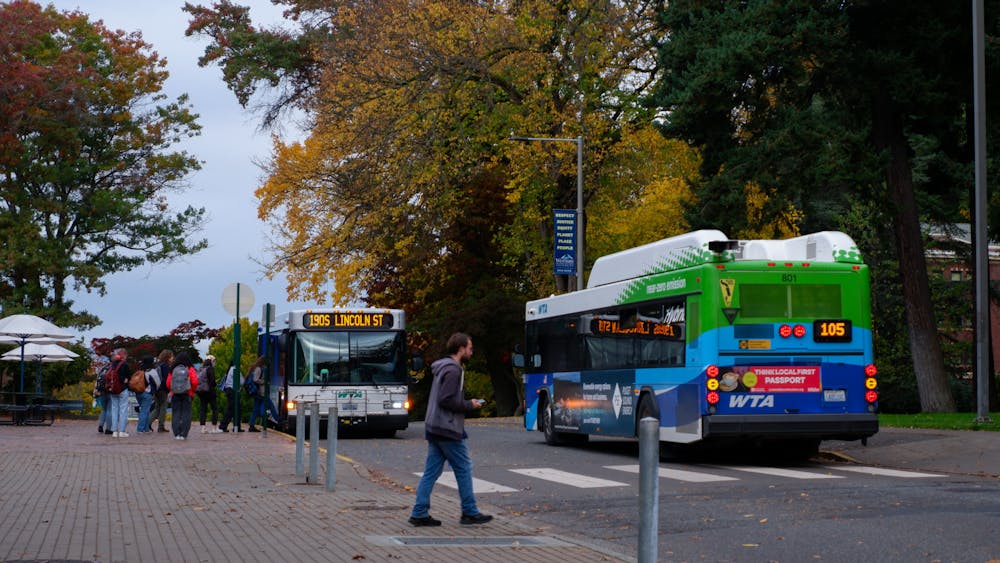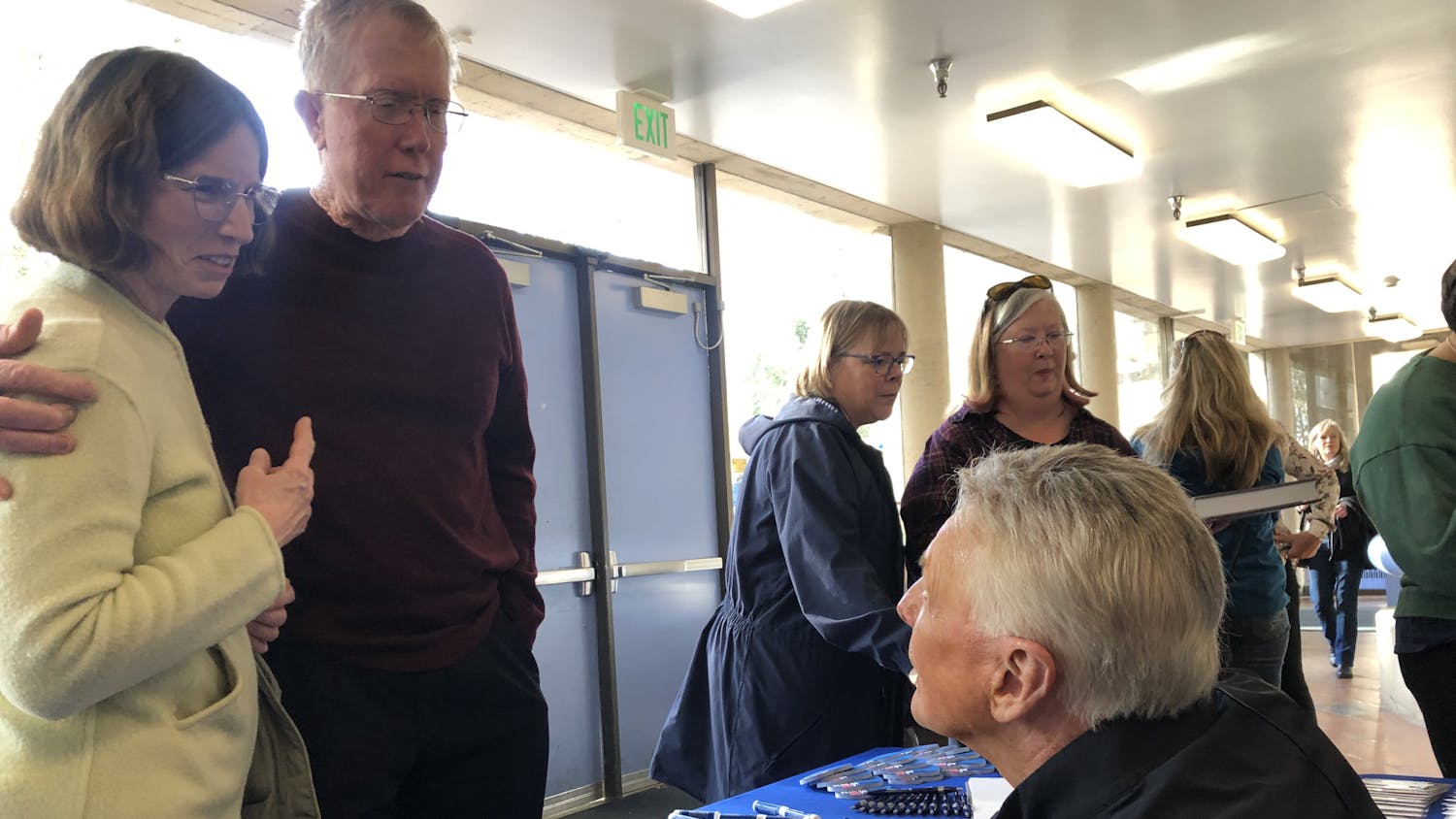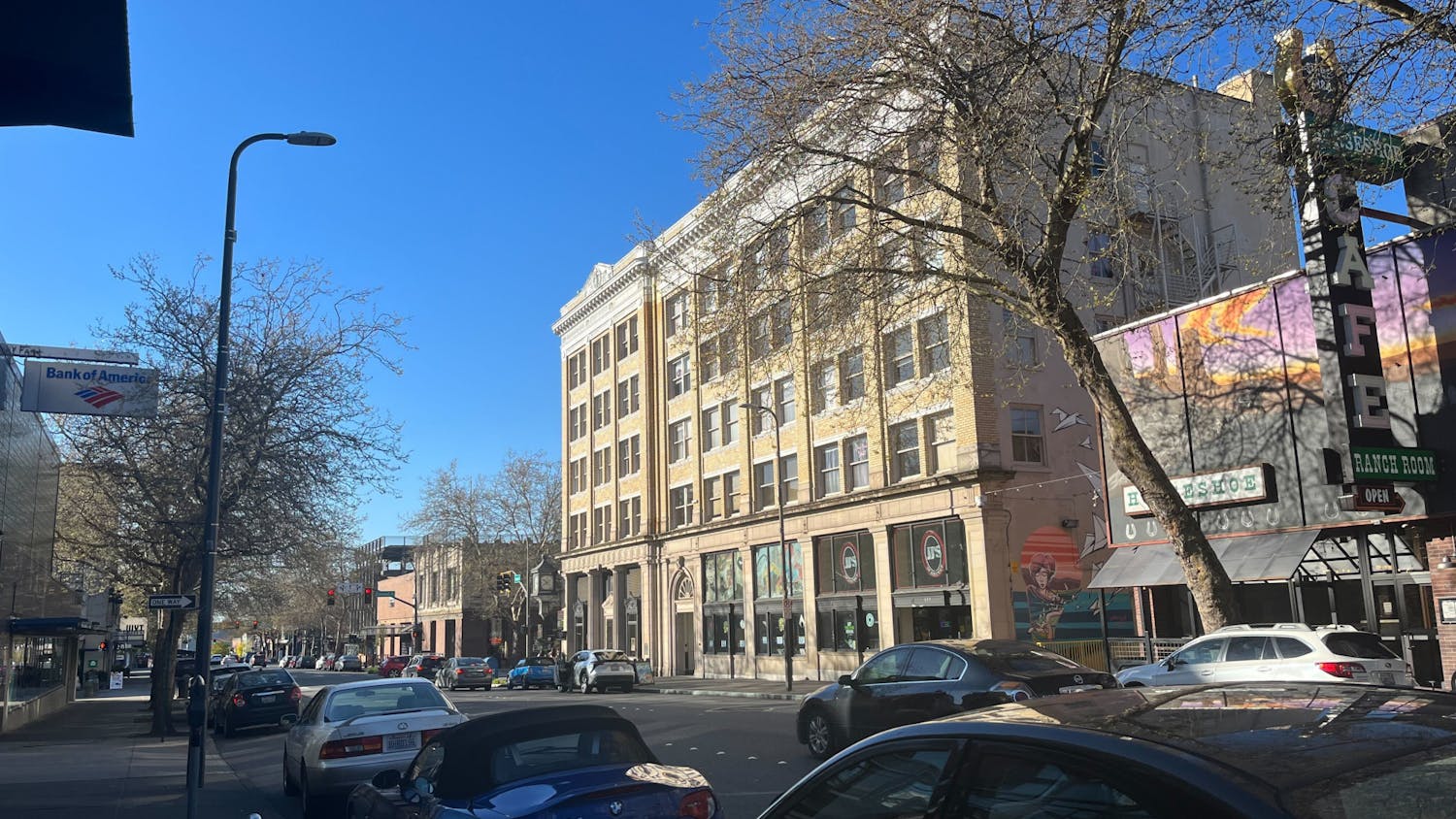Whatcom Transportation Authority works with Western Washington University to help improve the transportation system for commuting students needing more accessible stop locations or quicker and more reliable bus routes.
Enrollment numbers are starting to return to pre-pandemic levels at Western Washington University and new housing projects are under construction around campus. This has led to increasing boarding numbers, leaving Western students to wonder how WTA plans on accommodating the population of incoming commuters.
According to Mary Anderson, senior transit planner at WTA, boardings through a Western bus pass decreased by 55% from 2019 to 2022 likely due to the effects of COVID-19. Boardings would increase by 60% from 2022 to this year.
Additionally, total WTA fixed route boardings saw a similar pattern with decreases in ridership in 2020 by 57% and in 2021 by 11%. Boardings then increased in 2022 by 70%.

A Western Washington University Transportation Services sign stands outside the Viking Union on Oct. 18, 2023 saying “Register your bike.” Transportation Services helps students solve their commuting problems surrounding biking, walking, bussing and carpooling. // Photo by Madison Linney
Throughout recent years, students have experienced increasing frustration with commuting by bus due to long lines at the bus stops, overcrowded vehicles and skipped stops.
Viola Mangiavacchi, a third-year student at Western, said her primary way to commute to campus is by bus, but if it's early in the morning, she will walk instead as the more dependable option.
“I have an 8 a.m. [class] and the buses get so full so quick, so I always have to walk in the morning,” Mangiavacchi said.
All students registered for one or more credits have a free bus pass with the use of their Western student ID. This program began in 2007 in collaboration with WTA and since then, Western students have accounted for a large part of WTA ridership, said Genevieve Carrillo, community relations and marketing manager at WTA.
Carrillo said students comprise about half of the total riders on weekdays.
“For the first nine days of Western being in session this year, we had 16,836 boardings per day total and 8,992 of those boardings per day were associated with a Western ID card,” Carrillo said.

Two signs are positioned next to each other at the Haggard Hall bus stop on Western Washington University’s campus on Oct. 18, 2023. Bus times are posted at all Western bus stops. // Photo by Madison Linney
Mangiavacchi, among those student passengers, prefers to use her car as little as possible when going to campus because of the overcrowding at C lot and environmental concerns.
Students like Mangiavacchi have long expressed concerns about commuting by car, however, more recent complaints surrounding bussing as well have compelled WTA to look for more ways to accommodate students.
“We've definitely had students reach out and complain about being passed by buses, and I understand that is super frustrating when that happens,” Carrillo said.
With 85% of college students being commuters, according to a study done at New York University, the collaboration of transportation authorities and universities has become increasingly necessary. Bus delays, passings and other troubles may impact a student's ability to reliably commute to class or work.
“There’s a bus every 15 minutes, which isn't that bad, but if you need a reliable schedule to follow, like if you had an engagement to go to after classes – for example, work – I wouldn't necessarily rely on the bus to be super on schedule,” Mangiavacchi said.
With this in mind, WTA and Western are actively collaborating to create solutions to further support concerned students
“We work closely with WTA to make sure the bus service meets the needs of students,” said Shelby Zimmerman, WWU director of Transportation Services. "WTA has moved or added bus stops where student housing has increased. They are working on a rapid transit concept to serve the Western community and are also looking into a transit stop to serve Stateside residents.”
The Bus Rapid Transit, a type of high-quality transit system, is one of these possible solutions for improving speed and efficiency on popular lines in residential and employment centers. Western’s Blue Go Line was one of the lines evaluated for the possibility of BRT.
“Focusing on those attributes – speed, frequency and reliability, those characteristics of the service that are most important to riders – those are important objectives to think about as you’re designing the [BRT] and will ultimately make the service more attractive to potential riders,” said Jeremy Fichter, transportation planner at King County Metro Transit.
The BRT would include elements such as 10+ minute headways, enhanced stops, half-mile stop spacing, signal improvements, transit-supportive land use, transit lanes and branded buses, according to WTA’s website.
King County has its own BRT system, advertised to be the best metro they can offer.
“It's a service that operates frequently throughout the day. It’s a service that's intended to be more reliable by virtue of the speed and reliability-type improvements that we pursue on RapidRide lines,” Fichter said.
Jerry Roberson, the line lead for RapidRide H, J and R lines at the King County Metro Transit, said a BRT system in Bellingham, with the right improvements and planning, could be just the thing to help student commuters.
Roberson says that complementing bus priority improvements, like bus signals and bus lanes, will need to be made for the city to benefit from the BRT.
“If the stations are in the right locations to serve the students where they’re getting on and where they're getting off I think absolutely any size city can benefit from this tier of service within their community,” Roberson said.

Two buses stopped at Haggard Hall at Western Washington University on Oct. 18, 2023, with students lined up at the first bus. Ten Whatcom Transportation Authority bus routes serve the stops on Western Washington University's campus. // Photo by Madison Linney
Along with the BRT, WTA is looking into adding a bus stop by Stateside, an off-campus apartment near Western, as a lack of stop location concerns have been brought to Western's transportation department’s attention since the building opened to residents in fall 2021.
"When students bring issues to us, we talk to WTA and see if there's anything we can work together on to try to resolve those types of situations,” Zimmerman said.
The BRT still needs approval for funding and resources, but Mangiavacchi and others hope that with further work, this transit improvement could encourage more commuters to continue bussing.
The next step for the BRT is to conduct outreach and refine alternative options. The full timeline for the BRT can be found here.
Madison Linney (she/her) is a campus news reporter for the Front. She is a fourth-year BA marketing major with a minor in public relations. In her free time, she enjoys spending time with friends and family, going to the gym and exploring new places. You can reach her at madisonlinney.thefront@gmail.com.






